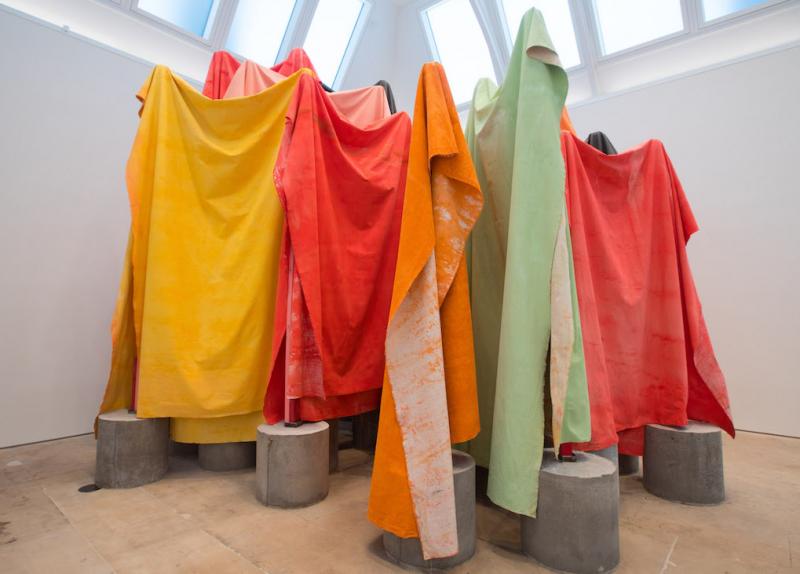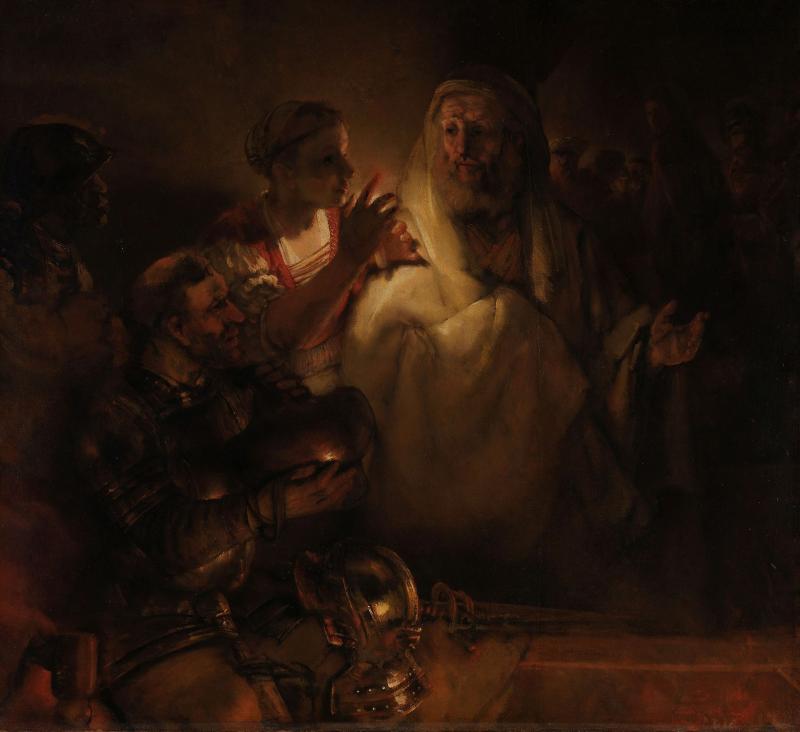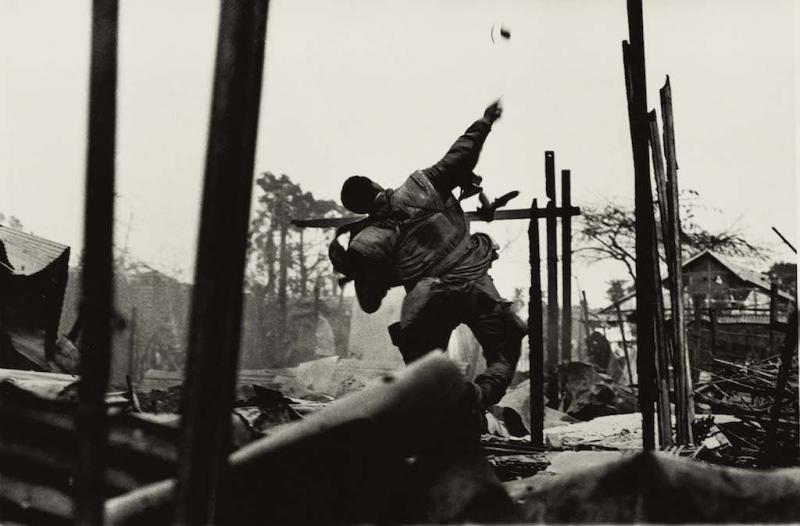Best of 2019: Visual Arts | reviews, news & interviews
Best of 2019: Visual Arts
Best of 2019: Visual Arts
The exhibitions we loved most over the past 12 months

Notable anniversaries provided the ballast for this year’s raft of exhibitions; none was dead weight, though, with shows dedicated to Rembrandt, Leonardo and
Gagosian Gallery took Rembrandt’s Self-Portrait with Circles, c.1665, as the starting point for Visions of the Self, which included works by Howard Hodgkin, Francis Bacon and Diane Arbus in an exhibition that turned out to be as much about artists’ relationships with Rembrandt as with self-portraiture. Rembrandt’s spiritual home at Amsterdam’s Rijksmuseum took the occasion of the 350th anniversary of his death as a chance to stage Rembrandt Velázquez: Dutch and Spanish Masters, an outstanding show with a wholeheartedly visual focus. The premise was simple: to compare paintings from 17th century Spain and the Netherlands, countries that though separated by religion were closely tied, and both experiencing a Golden Age. Meanwhile in London, the British Museum’s exhibition of Rembrandt’s prints and drawings was one of Marina Vaizey’s outstanding shows of 2019.
We had to wait almost until the year’s end for another of our critics’ favourites to open at the Jewish Museum in Camden. Charlotte Salomon: Life? or Theatre? got the full five stars from Katherine Waters, who describes it as “an absolute revelation”. Sheet after sheet of gouache paintings weave together song, image and text into a unique and deeply moving fictionalised autobiography that excavates Salomon’s family history of suicide, her first love, and the deteriorating social fabric as Germany fell prey to the National Socialist party – all in the course of finding her own artistic voice. It is an engrossing and deeply affecting exhibition dedicated to an artist who was just one of the millions murdered at Auschwitz; the show continues until March 1, and we urge readers to visit.
Each year brings with it a crop of newly “rediscovered” artists, but it’s hard to think of a more stunning array of neglected talents than those we’ve seen over the past 12 months. Sarah Kent was bowled over – as I think we all were – by Lee Krasner at the Barbican, whose exhibition Living Colour she describes as “undoubtedly the best of 2019”. Though a brilliant painter in her own right, Krasner had previously been best known as the wife of Jackson Pollock, whose death in a car crash in 1956 prompted a burst of grief-induced creativity. “She began to produce huge canvases like Polar Stampede (pictured below)” writes Sarah Kent. “A giant flurry of sepia arcs, it engulfs you in its explosive, edgy, desperate and euphoric energy. She never looked back and over the next three decades, until her death in 1984, produced some of the most magnificent abstract paintings of the late 20th century.” British Guyanese artist Frank Bowling was given his first major retrospective at the age of 85, as part of what Katherine Waters describes as “a series of brilliant and unusual shows at Tate Britain. Their peppy programme featured rebels, outsiders and autodidacts, and the Frank Bowling show drew sighs of admiration and encouraged much lingering. Special mention should be made to curators Elena Crippa and Laura Castagnini whose respect and admiration for the full range of his work was clear.”
British Guyanese artist Frank Bowling was given his first major retrospective at the age of 85, as part of what Katherine Waters describes as “a series of brilliant and unusual shows at Tate Britain. Their peppy programme featured rebels, outsiders and autodidacts, and the Frank Bowling show drew sighs of admiration and encouraged much lingering. Special mention should be made to curators Elena Crippa and Laura Castagnini whose respect and admiration for the full range of his work was clear.”
Another veteran of the British art scene to receive a retrospective is Bridget Riley, whose show runs until 26 January. The sometimes rather awkward spaces at the Hayward Gallery are the perfect setting for this celebration of her 70-year career, which takes us from art school days to the present day. It’s fascinating to see the meticulously detailed preparatory works relating to finished pieces. Designs are laid out on graph paper, the colours painted on, or applied with glue from wads of pre-cut, coloured paper in a fashion reminiscent of Matisse’s cut-outs. Observations and changes are marked in pencil, the final composition arrived at through a gradual process of looking and doing, looking and doing again. Phyllida Barlow’s transformation of the Royal Academy’s Gabrielle Jungels-Winkler Galleries was a euphoric delight, according to Sarah Kent, her flamboyant sculptures “inhabiting the elegant space like uncouth misfits” (main picture: canvasracks, 2018/19). Meanwhile at Tate Modern, Franz West proved a hit with our critics in a show we tagged as “absurdly exhilarating”. The V&A continued its now well-established series of fashion exhibitions with a double billing of Mary Quant and a stunning celebration of Christian Dior, while fashion photographer Tim Walker paid exuberant tribute to the V&A itself in his show Wonderful Things.
Phyllida Barlow’s transformation of the Royal Academy’s Gabrielle Jungels-Winkler Galleries was a euphoric delight, according to Sarah Kent, her flamboyant sculptures “inhabiting the elegant space like uncouth misfits” (main picture: canvasracks, 2018/19). Meanwhile at Tate Modern, Franz West proved a hit with our critics in a show we tagged as “absurdly exhilarating”. The V&A continued its now well-established series of fashion exhibitions with a double billing of Mary Quant and a stunning celebration of Christian Dior, while fashion photographer Tim Walker paid exuberant tribute to the V&A itself in his show Wonderful Things.
Don McCullin's retrospective at Tate Britain was one of the most memorable occasions of the year: the sheer weight and extent of his experience was awe-inspiring, and his mastery and commitment to the now lost art of black and white photography a precious relic from the recent past (pictured above: Don McCullin, Grenade Thrower, Hue, Vietnam, 1968). Sarah Kent described it as "the darkest, most compelling exhibition you are ever likely to see": certainly, of all the things I have seen this year, this and Charlotte Salomon's gouaches will stay in my mind's eye the longest.
Explore topics
Share this article
The future of Arts Journalism
You can stop theartsdesk.com closing!
We urgently need financing to survive. Our fundraising drive has thus far raised £49,000 but we need to reach £100,000 or we will be forced to close. Please contribute here: https://gofund.me/c3f6033d
And if you can forward this information to anyone who might assist, we’d be grateful.

Subscribe to theartsdesk.com
Thank you for continuing to read our work on theartsdesk.com. For unlimited access to every article in its entirety, including our archive of more than 15,000 pieces, we're asking for £5 per month or £40 per year. We feel it's a very good deal, and hope you do too.
To take a subscription now simply click here.
And if you're looking for that extra gift for a friend or family member, why not treat them to a theartsdesk.com gift subscription?
more Visual arts
 'We are bowled over!' Thank you for your messages of love and support
Much-appreciated words of commendation from readers and the cultural community
'We are bowled over!' Thank you for your messages of love and support
Much-appreciated words of commendation from readers and the cultural community
 Lee Miller, Tate Britain review - an extraordinary career that remains an enigma
Fashion photographer, artist or war reporter; will the real Lee Miller please step forward?
Lee Miller, Tate Britain review - an extraordinary career that remains an enigma
Fashion photographer, artist or war reporter; will the real Lee Miller please step forward?
 Kerry James Marshall: The Histories, Royal Academy review - a triumphant celebration of blackness
Room after room of glorious paintings
Kerry James Marshall: The Histories, Royal Academy review - a triumphant celebration of blackness
Room after room of glorious paintings
 Folkestone Triennial 2025 - landscape, seascape, art lovers' escape
Locally rooted festival brings home many but not all global concerns
Folkestone Triennial 2025 - landscape, seascape, art lovers' escape
Locally rooted festival brings home many but not all global concerns
 Sir Brian Clarke (1953-2025) - a personal tribute
Remembering an artist with a gift for the transcendent
Sir Brian Clarke (1953-2025) - a personal tribute
Remembering an artist with a gift for the transcendent
 Emily Kam Kngwarray, Tate Modern review - glimpses of another world
Pictures that are an affirmation of belonging
Emily Kam Kngwarray, Tate Modern review - glimpses of another world
Pictures that are an affirmation of belonging
 Kiefer / Van Gogh, Royal Academy review - a pairing of opposites
Small scale intensity meets large scale melodrama
Kiefer / Van Gogh, Royal Academy review - a pairing of opposites
Small scale intensity meets large scale melodrama
 Jenny Saville: The Anatomy of Painting, National Portrait Gallery review - a protégé losing her way
A brilliant painter in search of a worthwhile subject
Jenny Saville: The Anatomy of Painting, National Portrait Gallery review - a protégé losing her way
A brilliant painter in search of a worthwhile subject
 Abstract Erotic, Courtauld Gallery review - sculpture that is sensuous, funny and subversive
Testing the boundaries of good taste, and winning
Abstract Erotic, Courtauld Gallery review - sculpture that is sensuous, funny and subversive
Testing the boundaries of good taste, and winning
 Edward Burra, Tate Britain review - watercolour made mainstream
Social satire with a nasty bite
Edward Burra, Tate Britain review - watercolour made mainstream
Social satire with a nasty bite
 Ithell Colquhoun, Tate Britain review - revelations of a weird and wonderful world
Emanations from the unconscious
Ithell Colquhoun, Tate Britain review - revelations of a weird and wonderful world
Emanations from the unconscious
 Rachel Jones: Gated Canyons, Dulwich Picture Gallery review - teeth with a real bite
Mouths have never looked so good
Rachel Jones: Gated Canyons, Dulwich Picture Gallery review - teeth with a real bite
Mouths have never looked so good

Add comment